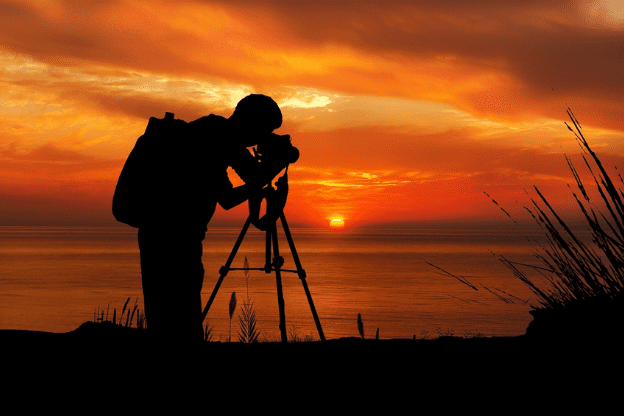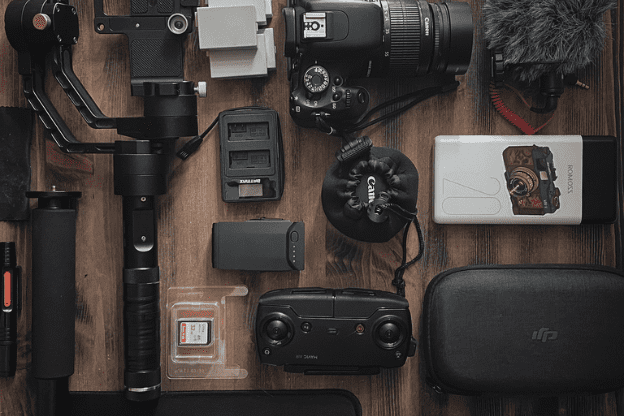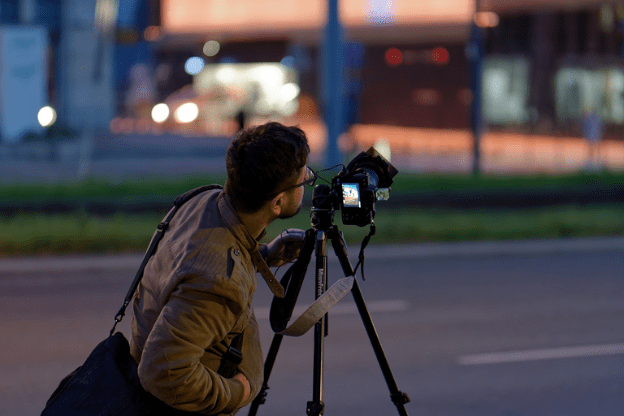
In the world of photography, stability is key. Whether you're capturing a breathtaking landscape, an intimate portrait, or a dynamic action shot, the stability of your camera can make or break the shot. This is where tripods and stabilizers come into play. But with so many options out there, how do you choose the right support for your photography needs? Let's dive in and explore the world of tripods and stabilizers and discover how the RSFI Institute's photography course can help you master these essential tools.
| Introduction |
|---|
| Why Stability Matters in Still Photography |
| Types of Tripods |
| Choosing the Right Tripod |
| Types of Stabilizers |
| How to Choose the Right Stabilizer |
| Combining Tripods and Stabilizers |
| Learning Stability Techniques |
| RSFI Institute's Photography Courses |
| Why Choose RSFI Institute |
| Conclusion |
| FAQs |


Stability is crucial for achieving sharpness and clarity in your photos. Even the slightest camera shake can result in blurry images, especially in low light conditions or when using a slow shutter speed. A stable camera ensures your photos are crisp and professional, enhancing their overall quality.
<5>Sharpness and ClarityWhen it comes to still photography, sharpness is everything. A blurry photo can ruin an otherwise perfect shot, making stability an essential aspect of any photographer's toolkit. Using a tripod or stabilizer eliminates the risk of camera shake, ensuring your photos are clear and sharp.
<5>Professionalism and QualityProfessional photographers know the value of a stable shot. It not only enhances the quality of the images but also reflects a level of professionalism. Clients and audiences can immediately tell the difference between a stable, sharp image and one that lacks clarity.

Tripods come in various shapes and sizes, each designed for specific needs and situations. Understanding the different types of tripods can help you choose the right one for your photography style.
Traditional tripods are the most common type, featuring three legs and a mounting head for the camera. They are known for their stability and are suitable for a wide range of photography styles, from landscape to portrait photography. Their adjustable legs and center column allow for versatile height adjustments.
Tabletop tripods are small, portable, and perfect for on-the-go photography. They are ideal for situations where you need to place your camera on a flat surface and shoot from a low angle. Despite their compact size, they offer decent stability and are great for vlogging and macro photography.
Flexible tripods, often known as gorilla pods, have bendable legs that can wrap around various objects like tree branches, poles, or even furniture. This versatility allows photographers to achieve unique angles and shots that would be challenging with traditional tripods.
Travel tripods are designed with portability in mind. They are lightweight and compact, making them easy to carry during travel. Despite their small size, they do not compromise on stability and are suitable for landscape and travel photography.
Selecting the right tripod involves considering several factors to ensure it meets your specific needs.
Tripods are made from various materials, including aluminum, carbon fiber, and plastic. Carbon fiber tripods are lightweight yet durable, making them a popular choice among professionals. Aluminum tripods are sturdy and more affordable but heavier.
If you travel frequently, a lightweight and portable tripod is essential. Consider the weight of the tripod when fully packed and whether it comes with a carrying case for convenience.
Ensure the tripod can support the weight of your camera and any additional equipment, such as lenses and external flashes. Overloading a tripod can compromise its stability and potentially damage your gear.
Read About: Landscape Photography Tips: Capturing the Great Outdoors.

Stabilizers are devices designed to keep your camera steady while in motion. They are essential tools for videographers and photographers who want to capture smooth, shake-free footage.
Stabilizers work by counteracting the movement of the camera, ensuring it remains stable even when the photographer or videographer is moving. They use various mechanisms, such as weights, motors, and gimbals, to achieve this stability.
Stabilizers are crucial for capturing smooth, professional-looking videos. They eliminate the jitters and shakes that can occur when holding a camera by hand, resulting in cinematic, high-quality footage.

There are several types of stabilizers, each designed for specific purposes and shooting styles.
Handheld stabilizers are compact and easy to use. They are ideal for run-and-gun shooting, allowing photographers and videographers to move freely while maintaining stability. They are perfect for capturing dynamic shots and are commonly used in weddings, events, and action sports.
Gimbal stabilizers use advanced technology to provide superior stabilization. They feature motorized gimbals that counteract the movement of the camera, ensuring smooth and steady footage. Gimbals are popular among professional videographers and filmmakers for their precision and ease of use.
Shoulder rigs are designed for heavier camera setups. They distribute the weight across your shoulder, making it easier to carry and operate the camera for extended periods. Shoulder rings are commonly used in documentary filmmaking and other long-duration shoots.
Choosing the right stabilizer depends on your equipment and shooting style.
Ensure the stabilizer is compatible with your camera and any additional gear you plan to use. Some stabilizers are designed for specific camera models, while others offer adjustable mounts for versatility.
Consider the setup and operation of the stabilizer. Some models require extensive balancing and calibration, while others offer plug-and-play simplicity. Choose a stabilizer that fits your comfort level and shooting requirements.
Stabilizers range in price from affordable options for beginners to high-end models for professionals. Determine your budget and choose a stabilizer that offers the best balance of features and affordability for your needs.

For optimal stability, consider using both tripods and stabilizers. Tripods provide a solid base for still shots, while stabilizers allow for smooth motion shots. Combining these tools can enhance your photography and videography, giving you the flexibility to capture a wide range of shots with precision.
Mastering the use of tripods and stabilizers requires practice and professional guidance. Enrolling in a still photography course can help you learn these techniques from experienced instructors.
A still photography course covers the fundamentals of using tripods and stabilizers, along with other essential skills. You'll learn how to choose the right equipment, set it up correctly, and use it effectively to enhance your photography.
Professional instructors can provide personalized feedback and tips to improve your technique. They can help you understand the nuances of stability and how to apply them in different shooting scenarios.

The RSFI Institute offers comprehensive photography courses designed to help you master the art of still photography. Their courses cover a wide range of topics, from basic techniques to advanced skills, ensuring you have the knowledge and confidence to excel in your photography career.
RSFI Institute's still photography course is designed for photographers of all levels. The curriculum includes lessons on camera settings, composition, lighting, and, of course, the use of tripods and stabilizers. The course also covers post-processing techniques to enhance your photos further.
• Understanding camera settings and manual mode
• Composition techniques for compelling photos
• Lighting principles and how to use natural and artificial light
• Practical sessions on using tripods and stabilizers
• Post-processing tips and software tutorials
In addition to still photography, RSFI Institute offers courses in cinematography. These courses cover the fundamentals of filmmaking, including camera operation, shot composition, and editing. Learning both photography and cinematography can broaden your skills and open up more opportunities in the visual arts industry.
Read About: Top 10 Film Institutes in Delhi NCR and Noida

RSFI Institute is renowned for its experienced instructors, state-of-the-art facilities, and successful alumni. They provide a supportive learning environment where you can develop your skills and build a strong foundation in photography and cinematography.
RSFI Institute's instructors are industry professionals with years of experience. They bring real-world insights and practical knowledge to the classroom, helping you learn the skills needed to succeed in photography.
The institute is equipped with the latest photography and cinematography gear, ensuring you have access to the tools used by professionals. Their facilities provide an ideal setting for hands-on learning and experimentation.
Many RSFI Institute alumni have gone on to have successful careers in photography and cinematography. Their success stories are a testament to the quality of education and training provided by the institute.
Choosing the right tripod and stabilizer is essential for achieving professional-quality photos and videos. Understanding the different types of support available and how to use them effectively can elevate your photography to new heights. The RSFI Institute's photography course offers comprehensive training in these techniques, ensuring you have the skills and confidence to excel in your photography career. So, whether you're a beginner or an experienced photographer, investing in the right support and education can make all the difference.
A tripod is crucial for still photography as it ensures stability and eliminates camera shake, resulting in sharp and clear images.
Yes, stabilizers are versatile tools that can be used for both photography and videography to achieve smooth and stable shots.
When choosing a travel tripod, look for lightweight materials, compact size, adjustable legs, and a sturdy build to ensure portability and stability.
Gimbal stabilizers are worth the investment for videographers and photographers who need advanced stabilization for smooth and professional-looking footage.
RSFI Institute offers comprehensive photography courses with experienced instructors, state-of-the-art facilities, and practical training to help you master essential photography techniques.